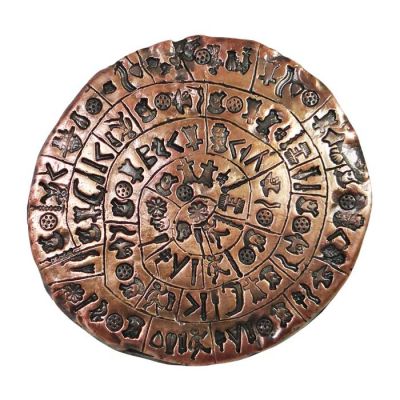The Phaistos Disc, the unique archaeological find from Phaistos in Southern Crete and one of the most famous mysteries of ancient greek art, inspired us to create an aesthetic clock, made of copper. The unique clock has embossed symbols of the disc and stands on a Greek marble base. A historical object of the ancient art and heritage of Greece, for your office or your home decoration.
Dimensions of the disc: 17 cm x 3 cm
All prices include VAT.
The Phaistos Disc is a disk of fired clay from the Minoan palace of Phaistos on eastern Crete, possibly dating to the 17th century B.C. Italian archaeologist Luigi Pernier recovered this remarkably intact "dish", on 3 July 1908 during his excavation of the first Minoan palace. The disk is made of clay, and it measures about 16 cm in diameter and uniformly slightly more than two centimetre in thickness.On its two sides, there are 45 unique signs, that depict human forms, fish, birds and plants.
It is covered on both sides with a spiral of stamped symbols and features 241 tokens, 122 symbols on the front side and 119 on the other side, which were apparently made by pressing hieroglyphic "seals" into a disc of soft clay, in a clockwise sequence spiraling toward the disc's center. The Phaistos Disc is generally accepted as authentic by archaeologists. Many attempts have been made to decipher the code behind the disc's signs. While it is not clear that it is a script, most attempted decipherments assume that it is most additionally assume a syllabary, others an alphabet or logography.
The Phaistos Disc is on display at the archaeological museum of Heraklion, in Crete.
No posts found









